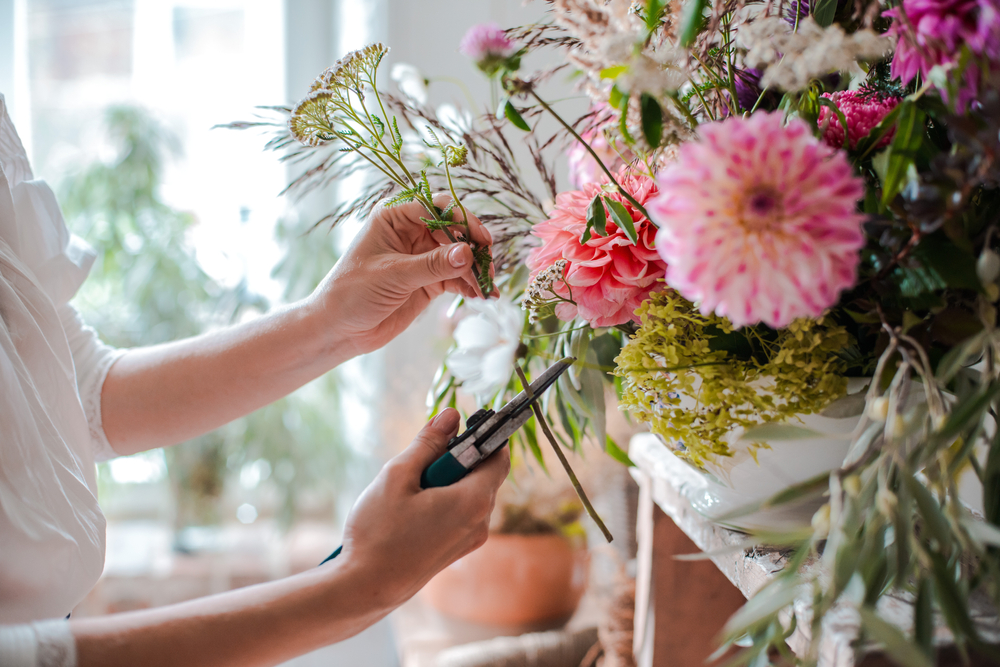Seasonal Flower Care Tips: Best Practices for Each Time of the Year
Flowers are a timeless way to add beauty to any space, but their care requirements can change with the seasons. Whether nurturing blooms indoors or tending to a garden outdoors, it's important to understand how to care for seasonal flowers throughout the year.

Flowers are a timeless way to add beauty to any space, but their care requirements can change with the seasons. Whether nurturing blooms indoors or tending to a garden outdoors, it's important to understand how to care for seasonal flowers throughout the year. Below are some essential flower care tips tailored to each season, ensuring your blooms remain healthy and vibrant no matter the time of year.
Spring Flower Care: Welcoming New Growth
Flowers are found in Spring after the long winter months when so many things are out of growth. Spring flower care focuses mainly on giving the flowers the ideal conditions needed so that new growth thrives as they continue to grow from the dormant state.
1. Planting New Flowers:
When to Plant: The best time to plant flowers is during Spring when planting both perennials and annuals is most effective. It is only desirable to plant this vegetable when the land is really warm and actual frost is out of the question.
Choose Hardy Varieties: To avoid going he or she should look for flowers that can grow in the climate of the place. Tulips, daffodils, pansies, and primroses also available at Sarnia Florists are familiar spring flowers that can be bought at a floral shop.
Soil Preparation: Till up the soil and add compost or other organic material to the soil to enhance the drainage and nutrient status.
2. Watering:
As the flowers start to grow in length, during spring the plants may require more watering than before. Some of the key factors that people should consider include the fact that the soil should always be moist but not water-logged.
Torrential watering should not be used when watering seedlings especially when the roots are very tender, this should be done using a watering can or a soaker hose.
3. Pruning and Deadheading:
Prune Early-Blooming Plants: Dead or damaged stems that were produced during the last season should be pruned away to enhance new growth.
Deadhead Regularly: Deadhead to compel the plant to keep flowering and to not use resources for producing seeds
Summer Flower Care: Keeping Your Garden Thriving
Basically, during summer, heat and prolonged daylight cause stress to flowers that might require time to bloom and keep blooming. During the summer season, care involves controlling water and making sure that the flowers do not suffer the worst of the summer heat.
1. Watering:
Consistent Watering: It also shows that flowers that are planted in a month of summer will require frequent watering to be supplied with adequate water supply. As with any plant, it is better to water it intensely, so it does not lose moisture as it warms up; it is best to water in the morning or in the evening.
Mulching: To further water, moderate temperature of the soil and weed control mulch should be placed around the trucks of the crops.
2. Fertilization:
Feed Your Flowers: Some plants that flower during the summer, including roses available at flower shops sarnia and petunias, should be fertilized fairly frequently. A combination of balanced fertilizer or a special fertilizer for your flowers depending on the type e.g. roses fertilizer for rose bushes.
Slow-Release Fertilizer: By so doing, a slow-release type will ensure that the plants do not receive excessive fertilizers and at the same time ensure that nutrients are availed in equal measure in the course of the growing season.
3. Protect from Pests and Diseases:
Watch for Pests: Aphids, slugs, and spider mites are likely to be pests of warmer temperatures during the greenhouse stages. Check your flowers often for pests, and spray them with natural chemicals such as neem oil or insecticidal soap.
Disease Prevention: Reduce fungi-related sicknesses through proper plant arrangement which will enhance drafts and through irrigation, prevent wetting the foliage since will enhance the growth of consumable molds and mildews.
Fall Flower Care: Preparing for Cooler Months
During this time of the year, your primary concern becomes preparing flowers for the cooler period that is ahead. Autumn is also more suitable for cleaning the garden and preparing perennials for the winter period.
1. Planting Fall Flowers:
Plant Fall-Blooming Varieties: This is the time for vibrant mums, asters, and ornamental kale to add color to the garden. They grew right up to the autumn and enriched the appearance of the garden.
Plant Bulbs for Spring: Spring is for planting summer-flowering bulbs also available at lapiers flowers
such as lilies, while autumn is ideal for spring flowering ones like tulips, daffodils,s and hyacinths. It is advisable to plant them deeply to avoid cutting them off from the adequate supply of food to the roots in cold environments.
2. Watering and Mulching:
Watering: Keep watering your flowers as usual but remember that the temperatures have started cooling and they need less water than summer.
Mulch to Protect Roots: For perennials and newly planted bulbs ensure that you use a thick layer of mulch around their base to protect them from frost and also regulate the amount of heat the bulbs receive.
3. Pruning and Clean-Up:
Cut Back Dead Growth: This should be done to remove any dead or diseased foliage or stems that last after the first frost of the year. With perennial plants, you should ideally cut back only after the first frost has occurred this is in a bid to avoid damaging fresh growth.
Prepare for Winter: In case you grow some tender perennials or plants in pots, it is advisable to take them indoors before a frost sets in. You may also wish to spray them with frost cloths or burlap.
Caring for flowers throughout the changing seasons requires knowledge and attention, as each season brings its own set of challenges and rewards. By following the seasonal care tips outlined above, you can ensure that your flowers remain vibrant, healthy, and thriving year-round. From planting and fertilizing to watering and protecting against pests, understanding your plants' needs and adjusting your care practices accordingly will lead to a flourishing garden, whether you are enjoying the first blooms of spring or the quiet beauty of winter.
Recent Posts
Year : 2025
Year : 2024
Year : 2023
Year : 2022
Year : 2021

